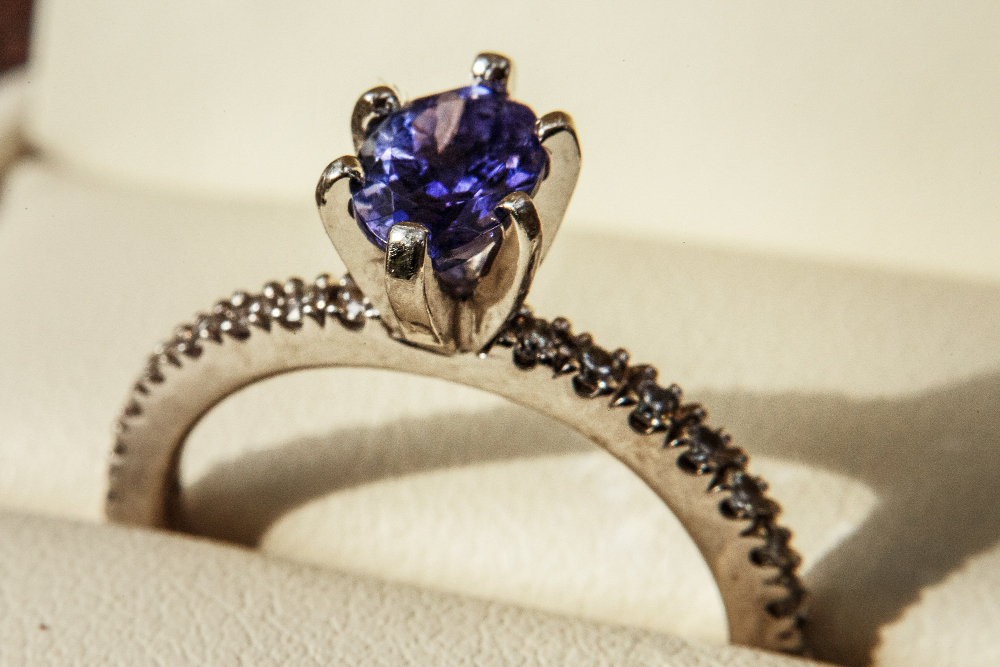Shopping for antique jewelry can feel like navigating a minefield, especially when you’re dealing with sapphire rings. The market is flooded with reproductions, “vintage-inspired” pieces, and outright fakes that can fool even experienced buyers. But here’s the thing – once you know what to look for, spotting a genuine antique becomes much easier.
The problem is that many people assume all old-looking jewelry is actually old, or that expensive means authentic. Neither is true. Some of the most convincing fakes carry hefty price tags, while genuine pieces sometimes hide in plain sight with modest asking prices.
Understanding What “Antique” Actually Means
Before diving into the details, let’s clear up some terminology. Truly antique jewelry is generally considered to be at least 100 years old, while “vintage” typically refers to pieces that are 20-100 years old. This distinction matters because different eras have distinct characteristics that can help verify authenticity.
Victorian sapphire rings (1837-1901) often feature elaborate settings with intricate metalwork and rose-cut diamonds as accents. Edwardian pieces (1901-1915) tend to be more delicate, with platinum settings and filigree work. Art Deco rings from the 1920s and 1930s have geometric designs and bold contrasts.
Each period has its own “fingerprint” of design elements, construction methods, and materials that are nearly impossible to replicate perfectly in modern reproductions.
The Tell-Tale Signs in the Metalwork
One of the easiest ways to spot authenticity is by examining the metal setting. Genuine antique rings show their age in specific ways that are hard to fake. Look for subtle variations in the metal’s surface – real antique gold develops a patina that’s different from the uniform aging you see on artificially aged pieces.
The construction methods also give away a ring’s true age. Hand-forged settings from earlier eras have slight irregularities that machine-made modern pieces lack. You might notice tiny hammer marks, uneven surfaces, or joints that aren’t perfectly smooth. These “imperfections” are actually signs of authentic craftsmanship.
When examining construction quality, it helps to look at examples of genuine pieces from reputable sources. Many vintage sapphire rings showcase these authentic construction techniques, giving you a reference point for what genuine antique work should look like.
Victorian and Edwardian rings often use different karat gold than what’s standard today. Many antique pieces use 15k or 18k gold, while modern jewelry typically uses 14k or 18k. The hallmarks (small stamps indicating gold content and maker) can be incredibly revealing if you know how to read them.
Examining the Sapphire Itself
The sapphire is where things get really interesting – and where fakers often trip up. Natural sapphires that are genuinely old have characteristics that modern lab-created or heavily treated stones simply don’t possess.
Look for inclusions (internal flaws or marks) that appear natural and random. Genuine sapphires often have silk-like inclusions, small crystals, or color zoning that creates subtle variations in hue across the stone. Lab-created sapphires tend to be too perfect, while heavily treated natural stones might show signs of heat treatment or filling.
The cut is another major clue. Antique sapphires were cut by hand, often resulting in slightly asymmetrical stones that maximize color rather than brilliance. Modern precision cutting creates perfectly symmetrical gems that, while beautiful, lack the character of hand-cut stones.
Color can be tricky to evaluate without experience, but genuine antique sapphires often have a depth and richness that’s hard to replicate. They might not be as “bright” as modern stones, but they have a certain warmth and complexity that comes with age.
Spotting Period-Appropriate Design Elements
Each era has signature design elements that counterfeiters often get wrong. Victorian sapphire rings frequently feature nature-inspired motifs – flowers, leaves, serpents, or hands. The vintage rings from this period often incorporate these romantic symbols in ways that feel organic to the time.
Art Deco pieces have clean geometric lines, step cuts, and bold contrasts between light and dark elements. The settings are usually low-profile, and diamonds (if present) are often baguette or emerald cut rather than round brilliants.
Edwardian rings tend to be delicate and lacy, with lots of open metalwork and milgrain (tiny beaded edges) details. The sapphires in these pieces are often surrounded by small diamonds in elaborate halos or floral patterns.
Modern reproductions often mix elements from different periods, creating pieces that look “generally old” but don’t actually match any specific historical style.
Red Flags That Scream “Reproduction”
Some warning signs are dead giveaways that you’re looking at a modern piece masquerading as antique. Machine-made settings with perfectly uniform surfaces and sharp, clean edges are immediate red flags. Real antique jewelry shows wear patterns that develop naturally over decades of use.
Be suspicious of pieces that look too new or too perfect. Genuine antique rings should show some signs of age – tiny dings, slight wear on high points, or patina in crevices. Pieces that have been “restored” to look brand new have often lost much of their antique character and value.
Modern diamond cuts in supposedly antique settings are another major warning sign. If you see perfectly round brilliant-cut diamonds in a ring that’s supposedly from 1890, something’s not right. Brilliant cuts weren’t perfected until the early 20th century.
Getting Professional Verification
Even with all this knowledge, sometimes you need expert help. A qualified gemologist can perform tests that reveal details invisible to the naked eye. They can identify treatments in sapphires, verify metal content, and spot construction techniques that indicate a piece’s true age.
Don’t be afraid to ask for documentation or certificates when buying expensive pieces. Reputable dealers should be willing to guarantee their attributions and provide detailed descriptions of any treatments or restorations.
If you’re buying online, make sure there’s a reasonable return policy. Photos can hide a lot of details that become obvious when you examine a piece in person.
The Bottom Line on Authenticity
Learning to spot genuine antique sapphire rings takes time and practice, but the basics aren’t that complicated. Look for signs of natural aging, period-appropriate design elements, and construction methods that match the claimed age. When in doubt, seek professional opinions and buy from reputable sources.
Remember that authenticity isn’t just about age – it’s about the story, craftsmanship, and historical context that make antique jewelry special. A genuine antique ring carries with it decades or centuries of history, and that’s something no reproduction can truly replicate.
The market for antique jewelry will always have its share of fakes and reproductions, but armed with knowledge, you can navigate it confidently and find pieces that are genuinely special.










